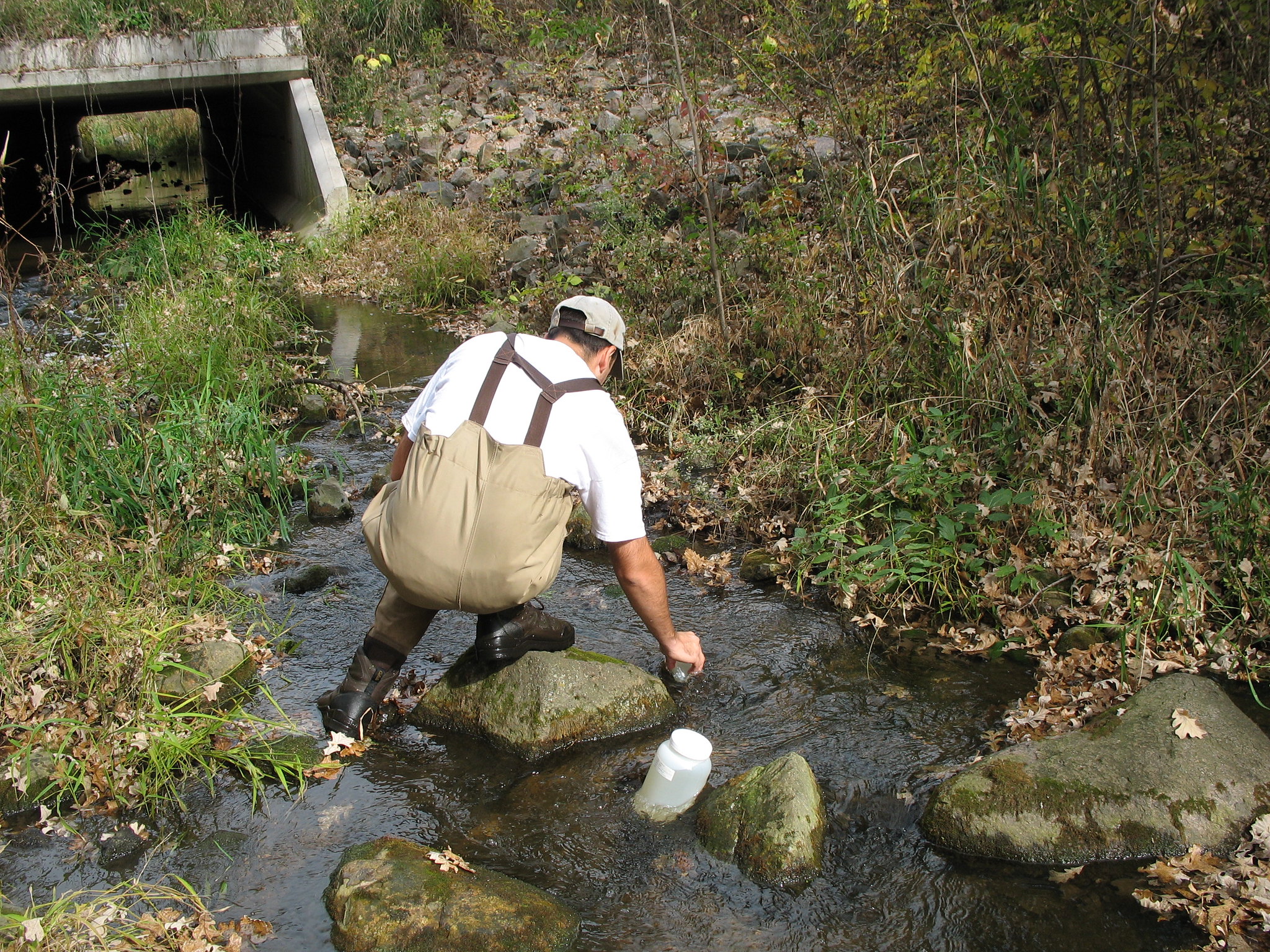FMR urges MPCA to develop long-overdue nitrate standards

How much nitrate in our surface waters is safe for plants and animals? We don't know, because the MPCA still hasn't established standards. (Photo by MPCA Photos)
Every three years the Minnesota Pollution Control Agency (MPCA) reviews the state's water quality standards as part of a federal requirement under the Clean Water Act.
Earlier this month, FMR submitted a letter to the agency about what we'd like to see happen as part of this triennial review. In our opinion, it is a simple request: Please complete the long-overdue process of establishing nitrate standards for our rivers, lakes and streams.
This is a critical step if we want clean, healthy waters in Minnesota.
Why nitrate standards are important
Nitrates are essential to plant growth and health, but in excess amounts, they can be a problem in our waters.
For example, excess nitrate in our drinking water can pose real risks to human health. For that reason, we have a state and federal standard of 10 parts per million to keep people safe. This standard gives water managers a target to aim for when reducing nitrate in our drinking water to the right levels.
But how much is safe for plants and animals in our surface waters?
Elevated nitrate levels can harm fish and aquatic life in our lakes and streams. Excess nitrate is also the primary driver of the oxygen-depleted Dead Zone in the Gulf.
So, what nitrate levels should water resource professionals aim for to protect aquatic life in Minnesota? We don’t yet have a number from the state, so we’re asking the MPCA to decide.
Lawmakers first instructed the MPCA to establish nitrate standards in 2010, when the agency received $600,000 from the Clean Water Fund to finalize the work.
It’s been 15 years, and we are still waiting.
If we want rivers, lakes and streams that are safe for all communities—humans, plants and wildlife—the state needs to provide a nitrate standard sooner rather than later.
Read: Our full letter to the MPCA
February 7, 2025
To: Minnesota Pollution Control Agency (MPCA)
Re: Proposed water quality standards work plan for 2025-2027
On behalf of Friends of the Mississippi River, please accept the following comments on the MPCA’s draft water quality standards work plan for 2025-2027.
We are grateful to the MPCA for its ongoing efforts to work collaboratively with water quality stakeholders from across the state to solicit input on the draft water quality standards work plan, including hosting multiple webinars and providing the opportunity to provide written comments.
We value the chance to participate in the decision-making process and appreciate the agency’s efforts to include multiple perspectives in moving its work plan forward.
Concerning the draft work plan itself, our primary comment relates to the establishment of nitrate standards for aquatic life.
We are pleased to see that the MPCA’s draft water quality standards work plan for 2025-2027 includes the development of long-delayed numeric aquatic life standards for nitrate in Class 2 surface waters within the “current and active” section of the work plan. This work is long overdue.
- During the 2005-2008 Triennial Review process, both the Minnesota Department of Natural Resources and the Minnesota Center for Environmental Advocacy raised concerns regarding the toxicity of nitrate to aquatic organisms.
- In May 2010, lawmakers appropriated $600,000 from the Clean Water Fund to the state for rulemaking to establish water quality standards for total nitrogen and nitrate nitrogen.
- In November 2010, the MPCA included draft numeric aquatic life standards for nitrate in the agency’s Aquatic Life Water Quality Standards Technical Support Document for Nitrate, which proposed the following nitrate (nitrate-N) criteria for the protection of aquatic life:
- Draft acute value (one-day duration) of 41 mg/L for a (Class 2 waters);
- Draft chronic value (four-day duration) of 4.9 mg/L (Class 2B waters); and
- Draft chronic value (four-day duration) of 3.1 mg/L (Class 2A waters)
- In June 2013, the MPCA published “Nitrogen in Minnesota’s Surface Waters,” which stated it was developing “water quality standards to protect aquatic life from the toxic effects of high nitrate concentrations….which is required under a 2010 Legislative directive.”
- In July 2021, the MPCA published its “Water quality standards work plan for 2021-2023” which included the agency’s “commitment to completing all Water Quality Standards (WQS) projects in Group 1,” including nitrate for aquatic life. At that time, the agency indicated that pre-rulemaking would take “two to three years in this development stage.”
- In October 2022, the MPCA published its Aquatic Life Water Quality Standards Draft Technical Support Document for Nitrate, which proposed nitrate (N:NO3) criteria for the protection of aquatic life, including the following:
- Draft acute value (one-day duration) of 60 mg/L for a (Class 2 waters);
- Draft chronic value (four-day duration) of 8.0 mg/L (Class 2B waters); and
- Draft chronic value (four-day duration) of 5.0 mg/L (Class 2A water).
- In December 2022, the MPCA informed lawmakers of its decision not to proceed further, choosing instead to make the standard conditional on the completion of a Wastewater Nitrogen Reduction Strategy and a 10-year revision of the Nutrient Reduction Strategy. To our knowledge, neither strategy is designed to inform the science of nitrate toxicity to aquatic life.
Minnesotans have now waited fifteen years for this work to be completed - with nothing to show for it. The MPCA is well-positioned and sufficiently resourced to complete this long-promised nitrate standard.
FMR strongly encourages the MPCA to honor its word and follow through on its commitment to completing long-overdue nitrate standards to protect aquatic life during the 2025-2027 work plan period.
Sincerely,
Trevor A. Russell
Water Program Director
Friends of the Mississippi River